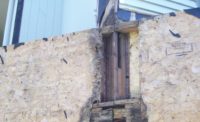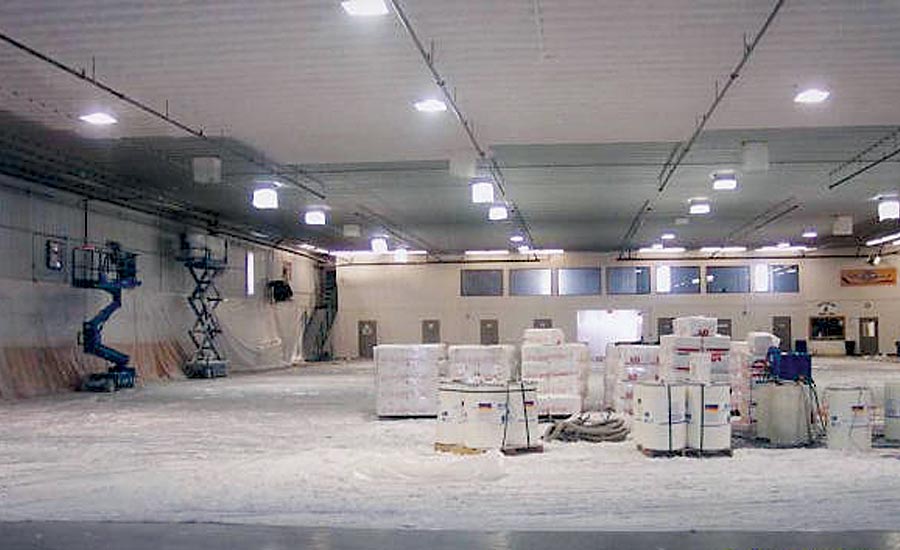Back Home to Burley
The Story Of The Man And Woman Behind Clayville Insulation And The Many Opportunities Insulation Has Presented To Them.














It was 1971 and Chris Clayville was tired of being an employee at the Atomic Energy Commission and living in Pocatello, Idaho. He had grown up in Burley, which was about 70 miles from where he and his wife Linda were living with their young daughters. Chris was ready to be his own boss. He knew what he didn’t want to do—be a rancher like his father and an elementary school teacher like his mother—but he didn’t know what he wanted to do either. After a year of thinking it over, he had three solid choices: raising catfish in natural hot water (which can be found in Idaho), growing mushrooms and earthworms in dirt potato cellars, or making insulation by grinding recycled newspapers.
And thus, Clayville Insulation was born. Chris quit his job, sold a college rental house, cashed in his savings, rented a moving truck and went back home to Burley.
At the time, Chris and Linda didn’t know there was conventional insulation equipment available. So, Chris’s brother scavenged the local scrap yards, junk piles of the potato processing plants, and came up with a blower to which they attached a cardboard box as a hopper and dryer hose, borrowed their dad’s pickup, and with family help, they were full-fledged part-time insulation contractors.
They had about $13,000 to their name when they moved back home. The Clayville’s found a used single-wide trailer house and parked it on Chris’s dad’s farm. The trailer housed their family and doubled as an office for Clayville Insulation.
“What was rather ironic was that we were parked right next door to the house his parents had lived in as newly-weds. In fact, they were living in it when Chris was born and it had cellulose insulation in the attic,” says Linda. “He always loves to tell people he moved back within 50 feet of the house he was born in.”
While still living in Pocatello, Chris had met up with a urethane foam installer from the Burley area who was spraying foam on a huge building there that was being converted into a freezer. He invited Chris along for the journey and over time taught him the ins-and-outs of the urethane business.
Different Projects
Throughout the years, Clayville Insulation has sprayed jobs such as calf sheds, roofs of potato storage buildings, pig, mink and chicken barns, an above-ground water tank and more. But the turning point for them was when an engineer from the power company in Twin Falls, Idaho, asked them to spray urethane foam on a 72,000 pound bulk head at the power plant in the Snake River for buoyancy so they could “float” it across the river. It worked.
Due to the OPEC Oil Embargo in 1971, there needed to be immediate ways to preserve oil. Fortunately for Chris and Linda, insulation began to be promoted in place of heating buildings with oil. They researched the insulation industry around them and found that there was no one making insulation in the south central part of Idaho. So with innovation, creativity and ingenuity, they jumped right in with both feet.
They quickly learned about fires in this business when a manufacturer of cellulose insulation in Boise burned down. They were on the lookout for another manufacturer when they stumbled upon one in Twin Falls. However, due to the high demand of materials because of the oil shortage, Chris didn’t have paper or chemical to supply. So he found a paper supply and a fire retardant chemical for the manufacturer, who then sold it all to someone else. Since Chris and Linda had found all the basic sources of the raw products, they just made it themselves.
“Chris’s dad bought a hay grinder and we lined his cattle truck with plastic, chopped the paper and blew it loose into the truck bed. It only took 3 weekends to make enough for one attic,” Linda says.
It was 1973 and the Clayville’s had obtained an SBA loan, rented a potato storage, and with the help of a local millwright, Dennis Isaac, formed a two-mill system. They ran the mills downstairs and the paper and chemical retardants were with the bagger and storage warehouse upstairs. The plant produced about 500 bags per day with five to six employees.
The excitement only lasted a little while as luck would have it, the industry’s enemy struck again: the plant burned down. Not once, but twice within the first year. Each time getting back to business was a quicker process than before.
A Time to Flourish
The Clayville’s learned that perseverance pays off. They trained their employees on the products they were working with and talked with the firemen on how to contain the fire without harming the rest of the mill (if possible). “Being in this business is not for the faint-hearted,” Chris says.
When boric acid became hard to come by, the Clayville’s did what the Clayville’s do. They figured it out. They found a chemist and with his help, they designed a plant to produce their own crude boric acid. They called this company CJC Inc.
Later in the 1970s, the Clayville’s had outgrown their home office. They purchased a shop building that was nearby at a bankruptcy sale and added several offices to it. Next to it stood a small brick building that had been a gas station. They converted it into a laboratory and break room. After all that, there was still ample space to park contracting trucks and pickups. The Clayville’s still operate the company out of there today.
Through the years the Clayville’s made many connections and lifelong friends through the insulation industry. Attending an association meeting with Odie Fish from Wisconsin, who was known to be the first cellouse manufacturer beginning in 1906-1909, it was clear to them there were distinct “newbies” and distinct “oldies.” It didn’t seem like the elites of the industry had anything to share about the industry with their competitors. But later in time, the Clayville’s joined SICIM and met Chairman of the Technical Committee and chemist Noel Lane.
Lane convinced SICIM that there was serious representation needed at the American Society of Testing. Over the last 20 years, Linda has served as secretary of subcommittee C32, secretary of C16 main committee and C16 main newsletter. Chris and Linda have both received Awards of Appreciation plaques and Linda was bestowed an Honors Award.
Linda felt privileged as one of the few women participants and has enjoyed taking photographs of members, meetings, officers and awards. She recognized early on that this group of mostly professional lab technicians, chemists, engineers and government officials, always looked forward to the dedicated pages of pictures and the chocolate candy she supplied at every meeting. Chris was dedicated to participating on the technical issues and chaired the task group committee developing the electric radiant panel fire standard.
Throughout the years they have been members of the local Magic Valley Builders Association, the Northwest Insulation Manufacturers, Seattle’s Contractors Association, SICIM, CIMA (the current Cellulose Insulation Manufacturers Association) and Insulation Contractors Association of America.
Other Endeavors
In the mid- to late-’80s, the Clayvilles started new companies in the Seattle and Alaska markets, to lesser or greater success.
As the years passed on Chris and Linda learned more about the insulation market and more about what set them apart from other businesses in insulation. “We operate in our small town, rural farm and ranch country, where we insulate our friends, neighbors and family’s properties. Where we can sleep at night because we only function with safety and good conscience priorities,” Chris says.
The Clayvilles found a niche market within spray-on cellulose. With product perfected by International Cellulose in Houston, Texas, they had another claim to fame when they sprayed the ceiling of the Salt Palace in Salt Lake City.
As far as plans for retirement? Well, Chris says he’s been retired since the day he decided to be his own boss. And Linda? Well, she feels privileged to have been able to juggle working in the business along with raising kids, being a local election judge for more than 30 years and spending time doing photography all while serving as the high school debate judge, beautifying her yard and of course, spending time with her family.
“Just being successful as a company is all we can hope for,” says Linda. “We’re always striving to know our market and customers and being able to stay at least one step ahead so we can provide that good customer service.”
Chris and Linda have been through at least three recessions while Clayville Insulation has been in operation, though they didn’t know it. So, they’ve learned not to spend a lot of time worrying about what tomorrow will bring. They do, however, spend a little time wishing that the population in their beloved Idaho would slow down a bit. “We are selfish and don’t want to share. So if any outsiders come to look, we don’t mind, but just keep on going and turn out the lights on your way out!” Chris says.
The insulation industry has been nothing short of a rollercoaster for the Clayvilles. However, it has allowed them to fulfill one of their passions: traveling. They have been on 25 cruises to places such as New England, Quebec, the Panama Canal, and not to mention the 100+ cities they have been to.
Even though they’ve spent their time in the most beautiful of locations, the Clayvilles are always glad to come back home to Burley.
Looking for a reprint of this article?
From high-res PDFs to custom plaques, order your copy today!
















